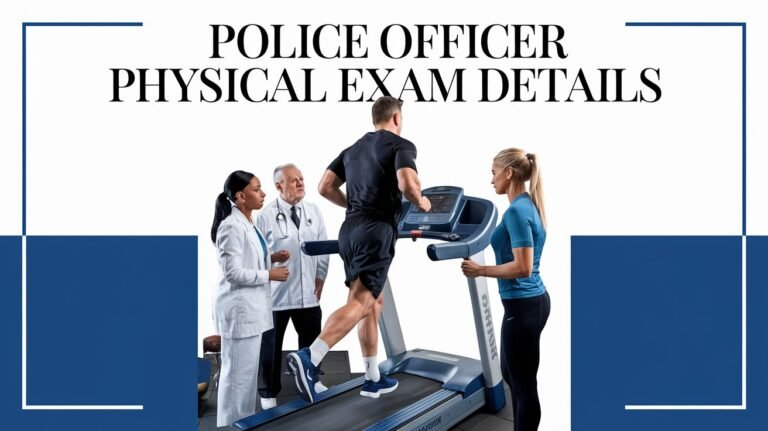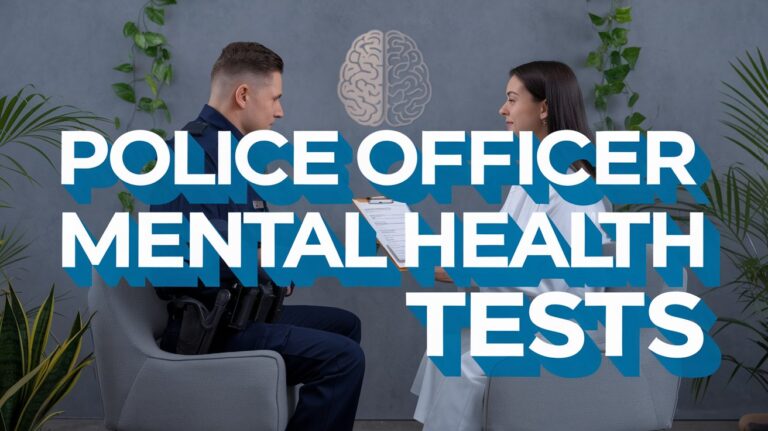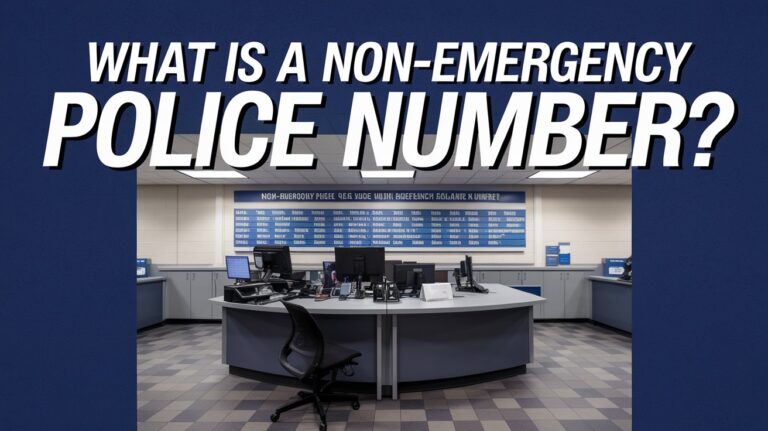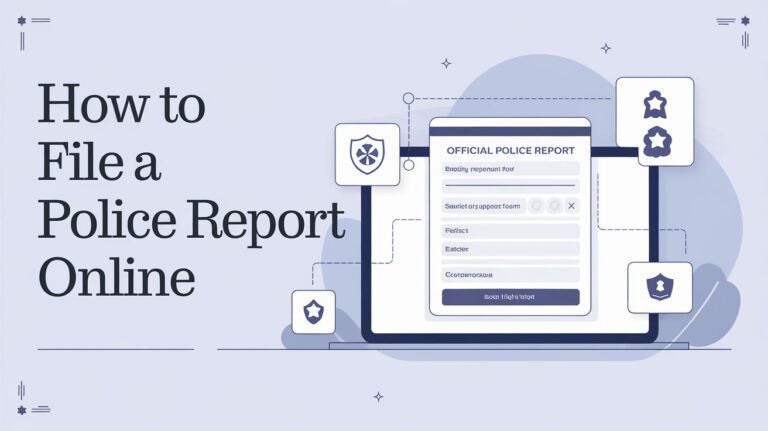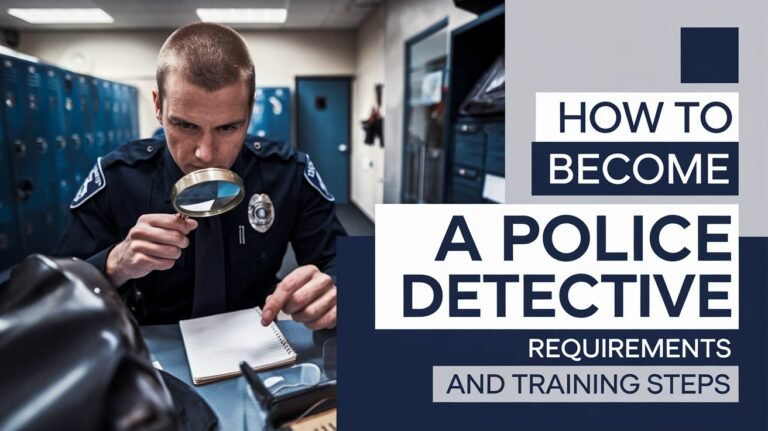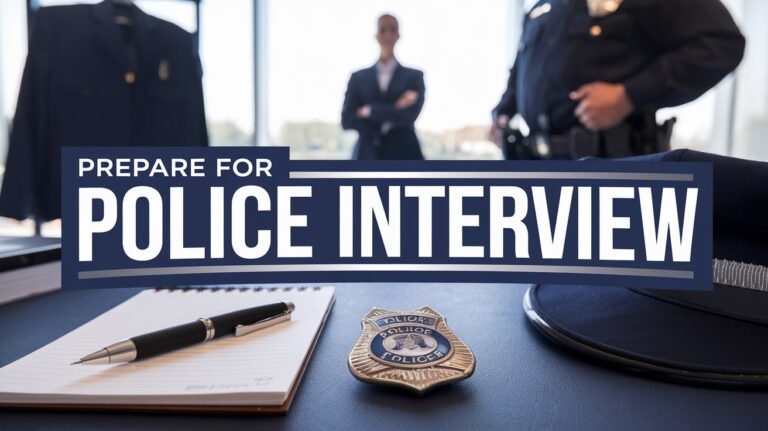Police Officer Eyesight Requirements: Standards You Need
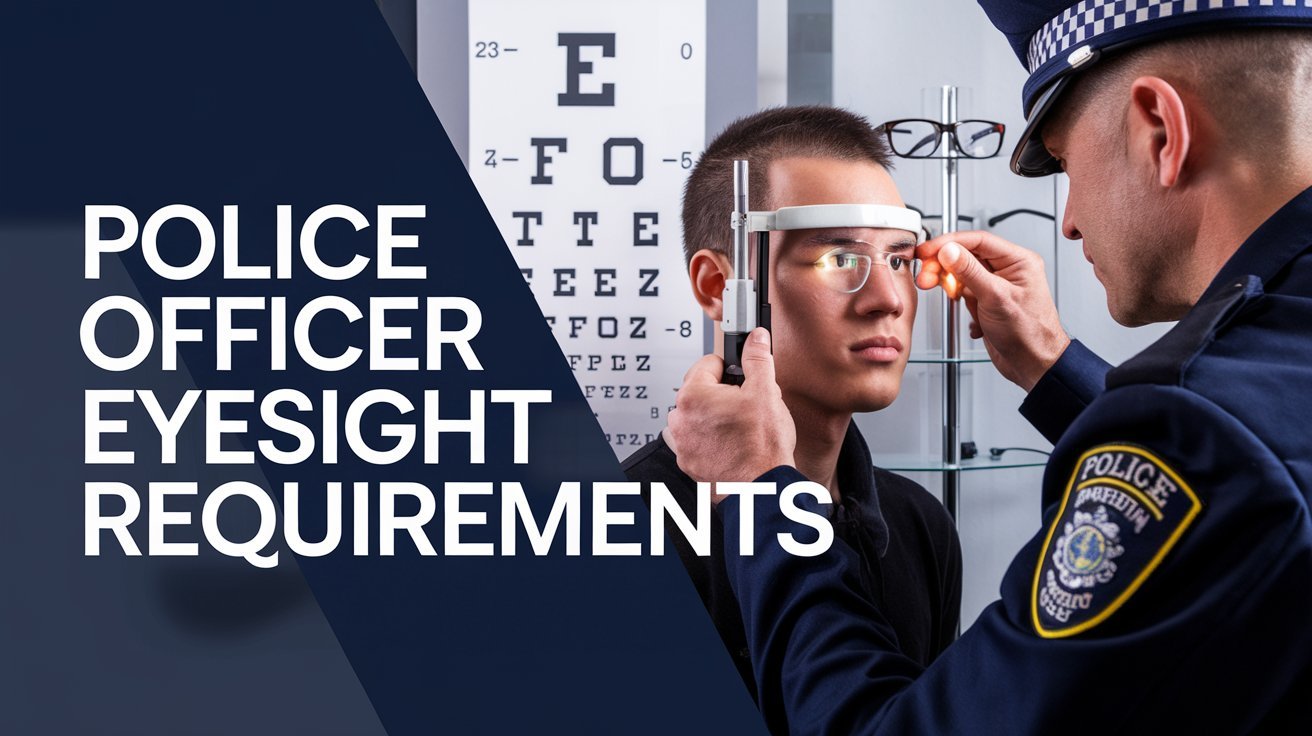
Policing is a tough job that needs top-notch eyesight. Police officers must see well to do their job right. They need to spot license plates, read street signs, and judge threats accurately. These rules help keep everyone safe and the officers healthy.
Before joining the police, candidates go through detailed eye tests. These check their sharpness, color vision, depth sense, and side vision. The goal is to make sure they can do important tasks like recognizing faces and handling guns safely. There are strict rules about what vision is allowed, even after eye surgery.
Key Takeaways
- Police officers must meet specific vision standards, including uncorrected distant visual acuity of at least 20/40 in one eye and no worse than 20/70 in the other eye.
- Peripheral vision must be greater than 120 degrees in each eye, and depth perception should be less than 100 seconds of arc or 50% or more for Shepard-Fry.
- Conditions requiring contact lenses for adequate vision correction, excluding refractive errors, do not meet the standard for law enforcement personnel.
- Comprehensive vision testing, including color vision and medical history assessment, is required to ensure officers can safely and effectively perform their duties.
- Refractive surgery candidates must meet specific recovery period and vision stability requirements before being considered for police officer roles.
Basic Vision Requirements for Law Enforcement Careers
To become a police officer, you must meet strict vision standards. This ensures officers can do their jobs well. You need a minimum uncorrected vision of 20/40 with both eyes open, as checked with a Snellen opticon. When wearing glasses, your vision must be 20/20 or better in each eye.
Minimum Visual Acuity Standards
The vision standards for law enforcement are set to help officers perform important tasks. Your uncorrected vision must be at least 20/40 in one eye and no worse than 20/70 in the other. Or, it must be 20/30 in one eye and no worse than 20/100 in the other. When corrected, your vision must be 20/20 or better in each eye.
Corrected vs. Uncorrected Vision Requirements
Law enforcement agencies also have specific corrected vision requirements. You must be able to see 20/20 in each eye when wearing glasses or after eye surgery. Your near vision must also correct to 20/20 in the better eye.
Distance Vision Specifications
| Vision Measure | Requirement |
|---|---|
| Uncorrected Distant Visual Acuity | 20/40 or better in one eye, no worse than 20/70 in the other eye |
| Corrected Distant Visual Acuity | 20/20 or better in each eye |
| Corrected Near Visual Acuity | 20/20 or better in the better eye |
Police Officer Eyesight Requirements: Medical Standards
Good vision is key for police officers. Police departments in the U.S. have strict rules to check if applicants can see well. They look at how sharp the vision is, color recognition, and depth perception.
Applicants must go through detailed eye tests as part of their fitness checks. These tests include a medical history, a full physical check-up, and specific eye tests. Some eye problems can stop someone from becoming a police officer.
For example, issues like blepharitis, dacryocystitis, and ptosis can be a no-go. Also, problems like corneal dystrophy, past eye surgeries, and certain retinal issues can keep someone from joining the force. These strict eye examination procedures and duty fitness assessments help pick the best for the job.
| Vision Requirement | Standard |
|---|---|
| Minimum Corrected Distance Visual Acuity | 6/12 in either eye and 6/6 or better binocularly |
| Minimum Corrected Near Static Visual Acuity | 6/9 or better binocularly |
| Corrected Low Contrast Distance Visual Acuity | 6/12 or better for a 10% contrast target, binocularly |
| Minimum Visual Field | At least 120 degrees horizontally by 100 degrees vertically |
Color Vision Testing Protocols for Police Officers
Having good color vision is key for those wanting to be police officers. They need to spot and tell apart different colors. This skill is vital for their job. So, they go through tough tests to check their color vision.
HRR Pseudoisochromatic Plate Test Standards
The main test for police candidates is the Hardy, Rand and Rittler (HRR) test. It’s done 30 inches away under bright light. They have to spot and name 6 special plates. Passing this test is a must for law enforcement jobs.
Color Vision Follow-up Assessments
If someone doesn’t pass the HRR test, they might get more tests. These could be the HRR test again or other tests like the anomaloscope. The aim is to see how well they can see colors and if they meet law enforcement vision guidelines.
Impact of Color Blindness on Duty Performance
Some mild color vision problems might be okay for police work. But, serious issues like achromatopsia can really hurt their job performance. People who can only see in gray are not allowed to be police officers. This is because color vision is so important in law enforcement vision guidelines.
Depth Perception and Peripheral Vision Criteria
In law enforcement, depth perception and peripheral vision are key. These skills help officers see their surroundings clearly. The rules for police vision make sure they can handle their tough jobs well.
Police need to see depth well, with less than 100 seconds of arc. This skill is vital for driving and other important police tasks. It helps them make quick, accurate decisions.
They also need to see wide, with more than 120 degrees in each eye. This wide view helps them spot dangers from the side. It’s crucial for staying safe and aware.
These vision standards are important for officer safety and community safety. They help police officers move safely, react quickly, and protect everyone.
Refractive Surgery Policies and Requirements
Some police officers choose refractive surgery like LASIK or PRK to meet law enforcement’s vision needs. These policies outline the rules and recovery times for officers to keep their vision sharp.
LASIK Surgery Guidelines
Applicants for LASIK must show stable vision and no glare issues five months after surgery. If a second surgery is needed, the process takes three more months.
Recovery Period Requirements
- PRK or ALK surgery requires a six-month wait before officers can return to duty.
- During this time, they must have eye exams to check their vision meets standards.
Post-Surgery Vision Stability Standards
After recovery, vision must be stable and 20/20 corrected in each eye. Any side effects like halos or dry eyes are watched to make sure they don’t affect the officer’s work.
| Procedure | Recovery Period | Minimum Visual Acuity |
|---|---|---|
| LASIK | 5 months | 20/20 corrected |
| PRK/ALK | 6 months | 20/20 corrected |
Following these policies helps police officers keep their vision sharp. This is crucial for their important law enforcement duties.
Eye Health and Medical History Assessment
Eye health is key for law enforcement officers. They need sharp vision to do their jobs well. Police officers get more than just a basic eye test. Their eye health and medical history are also checked.
Doctors look for eye problems like glaucoma and night blindness. They also check for past eye issues that could affect vision. This includes tumors or other problems that could harm eyesight.
They also examine the cornea for conditions like keratoconus. Past eye surgeries are reviewed too. If contact lenses are needed for vision, it might not meet the police standards.
Keeping eyes healthy is vital for police officers. It helps them pass duty fitness assessments and follow law enforcement vision guidelines. The eye examination procedures help ensure they can do their jobs safely and effectively.
Vision Correction Policies During Active Duty
Police officers need to have good vision to do their job well. They can use soft contact lenses for up to 6 weeks or more. This is okay, as long as they meet the vision standards. But, if they need lenses for other vision problems, not just nearsightedness, they don’t qualify.
Contact Lens Regulations
Police officers can wear soft contact lenses during duty. They must follow certain rules:
- Soft contact lenses can be worn for up to 6 weeks or longer without being subject to uncorrected distant-vision standards.
- Conditions requiring contact lenses for adequate correction of vision, other than refractive errors, do not meet the standard.
- Proper maintenance and handling of contact lenses is crucial to prevent eye infections or other complications.
Eyewear Requirements on Duty
Police officers might need to wear special eyewear or gear. This depends on their tasks and the environment. The eyewear is to keep them safe and healthy while they work.
The rules on vision and eyewear help police officers see well and stay safe. This lets them do their job right and keep the community safe.
Critical Vision Tasks in Police Work
Law enforcement officers (LEOs) have many critical vision tasks. They need to read license plates and street signs, identify faces, and make quick shoot/no-shoot decisions. Good police officer eyesight requirements and passing duty fitness assessments are key to meet law enforcement vision guidelines.
Depth perception is vital for tasks like driving. Officers must quickly switch focus between far and near objects. Eye exams should check for clear, comfortable vision at all distances and angles.
Research shows that LEOs with 20/20 vision in dim light can spot weapons less than 6 feet away in about 80% of cases. This number drops to under 40% for those with 20/60 vision. Officers with better than 20/20 distant vision make fewer than 10% mistakes in shoot/no-shoot situations. Those with worse vision have a 30% error rate.
Keeping visual acuity at its best is crucial for police work. Regular vision checks and following police officer eyesight requirements, duty fitness assessments, and law enforcement vision guidelines are vital. They help protect both officers and the public they serve.
Vision Waiver Process and Considerations
Law enforcement officers must meet strict vision standards for public safety and job performance. Sometimes, they may not meet these standards, leading to a vision waiver process.
Medical Review Board Procedures
The vision waiver process involves a detailed review by a Medical Review Board (MRB). This board looks at cases where applicants or officers don’t meet vision standards. They consider the vision condition, its impact, and possible treatments or accommodations.
The MRB reviews medical records, specialist opinions, and performance tests. They decide if the applicant can safely do law enforcement tasks. They also look at any special strategies or adaptations.
Documentation Requirements
- Comprehensive medical records detailing the vision condition and any ongoing treatments
- Evaluations from eye care specialists, including optometrists or ophthalmologists
- Assessments of job performance and the ability to perform critical vision-related tasks
- Proposed accommodations or alternative methods to compensate for the vision limitation
The MRB carefully looks at all the documentation before making a decision. They might ask for more information. The goal is to make sure officers with waivers can do their jobs safely and effectively.
Regular Vision Screening and Monitoring
Police officers need sharp vision for their duties. Regular vision tests are key to keep their eyes in top shape. These tests check many things, like how well they see, colors, depth, and eye health.
Police departments often do vision tests every year or two. These tests check how well officers see at different distances and how well they see in the corners of their eyes. This helps find any vision problems early on.
Officers also go through special fitness tests that check their vision. These tests make sure they can do their jobs safely. This includes spotting dangers, reading plates, and moving through complex areas.
| Profession | Distance Visual Acuity | Near Visual Acuity | Visual Field |
|---|---|---|---|
| Police Officers | UCVA not worse than 6/24, BCVA can be either 6/6 or till 6/12 | N5-N6 @35cm to 40cm | At least 120 degrees horizontally and 100 degrees vertically |
| Air Pilots and Air Traffic Controllers | 20/20 (6/6) at 6m (20 feet) | N5/N6 @35cm | 190 degrees horizontally and 120 degrees vertically |
| Navy Personnel | UCVA not less than 6/9 or 6/6, BCVA 6/6 | N6 or N5 @35-40cm | Emphasis on binocular single vision |
| Astronauts | UCVA and BCVA of 6/6 | N6 @35cm | Normal stereopsis range |
| Army and Military | UCVA not worse than 6/12, BCVA 6/6@6m | N5 or N6@35cm | 190 degrees horizontally and 120 degrees vertically |
Regular vision checks help police officers stay sharp. This keeps them and the public safe. It’s a smart way to protect everyone.
Conclusion
The rules for police officer eyesight are strict. They make sure officers can do their jobs well and safely. These rules cover many things, like how well they can see and their eye health.
New ways to correct vision, like surgeries, offer more options. Regular checks also help keep officers’ vision up to par.
Wearing good protective eyewear is key for officers. They need glasses that can handle impacts and are easy to clean. This keeps their eyes safe from harm.
These strict rules and the right eyewear are vital. They help keep police officers safe and effective in their work.

